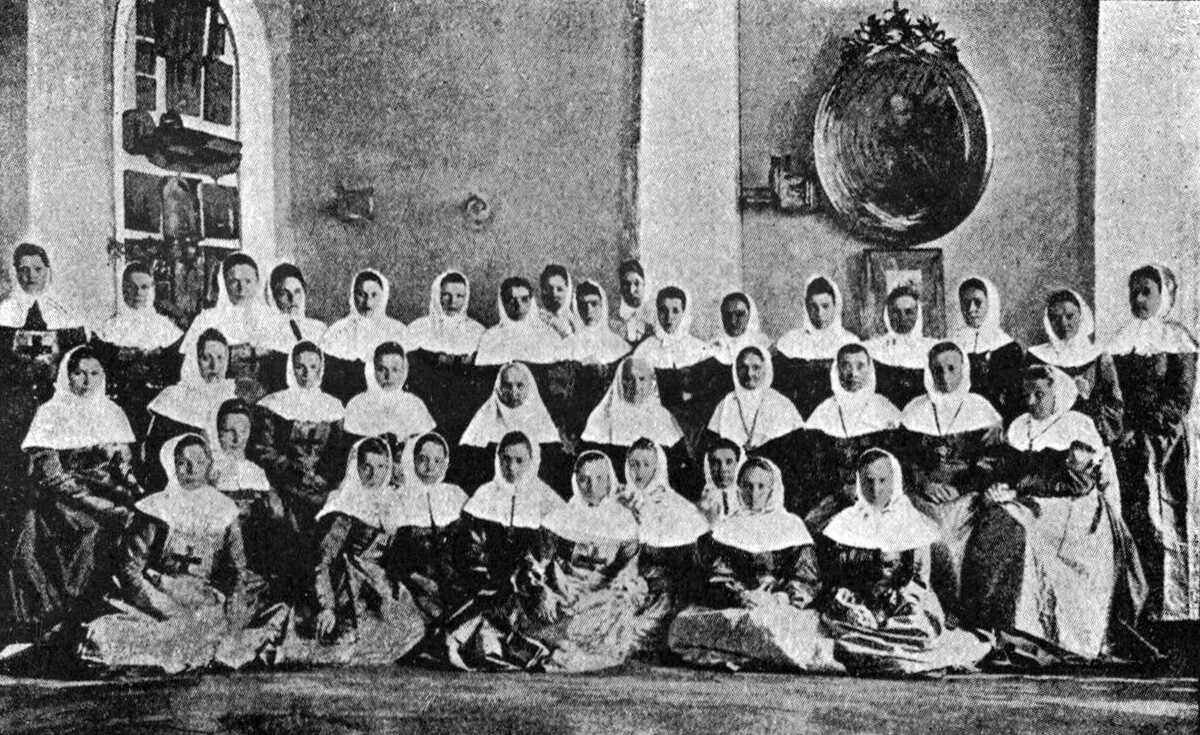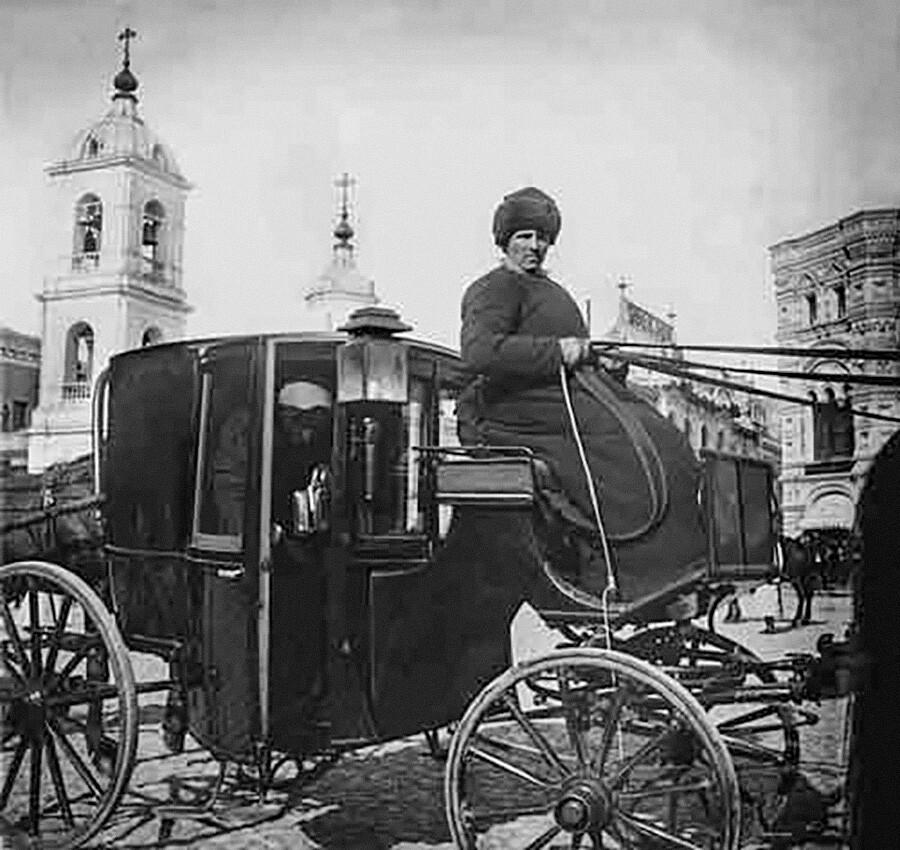At the very beginning of 1904, the Russo-Japanese War began, which ended up extremely bloody for Russia. In the photo below, Nicholas II is met with bread and salt on the railway station in the Ural town of Zlatoust, where he arrived at the dispatch of regiments to the front and to inspect factories.
After the ceremonial welcome, the emperor headed to a parade in his honor.
Nicholas II next spoke to peasant elders during his arrival at the location of troops sent to the Far East.
The Russo-Japanese War is one of the first wars from which many front line photographs were taken. This following photo shows a military orchestra practicing in a field.
Meanwhile, the whole country was supporting the front. In the palace of Grand Duke Vladimir Alexandrovich in St. Petersburg, a workshop was organized to sew linen for the army.
Many girls trained as ‘Sisters of Mercy’ and went to the front to treat soldiers and care for the wounded.

Leo Tolstoy sharply condemned the war. In 1904, he wrote an anti-war article titled: ‘Bethink Yourselves!’, which so blatantly criticized the actions of the authorities and the emperor that it was banned from publication. "Again war. Again sufferings, necessary to nobody, utterly uncalled for," he wrote.
In 1904, a long-awaited event took place in the emperor's family – after four girls, the empress finally gave birth to a boy, the future heir to the throne. Below is one of the first photos of Tsarevich Alexei with his family.
Despite the war, social and bohemian life was still very active in the capitals. The photo below shows famous singer Fyodor Chaliapin (standing next to the piano player) visiting the house of the critic Vladimir Stasov (sitting in the center with a white beard) in Moscow.
Theater life in St. Petersburg also didn’t stop. The following photo captures a scene from ‘Nora’, a performance based on Henrik Ibsen's play ‘A Doll's House’. Famous actress Vera Komissarzhevskaya plays the title role (pictured in the black dress below).
A beautiful lady, famous writer and poetess Zinaida Gippius, poses for Otto Renard's photo studio, demonstrating the fashion of the 1900s.
In July 1904, Minister of Internal Affairs Vyacheslav Pleve was killed by a bomb thrown into his carriage by a revolutionary terrorist. Below, the official's solemn funeral is pictured.
Pyotr Svyatopolk-Mirsky became the new Minister of Internal Affairs. The photo below shows him in his office. He would be dismissed from his post after the outbreak of riots and revolution in 1905, to which both the Russo-Japanese War and Svyatopolk-Mirsky's policies led.
Today, it is hard to imagine that horse-drawn carriages once rode near St. Basil's Cathedral in Moscow and there was a spontaneous market that would often be set up there.
Below is what an ordinary Moscow cabman looked like.

In the early 20th century, American company ‘Singer’ began to work in Russia and soon even produced its sewing machines in the country, so as not to have to import them from abroad. The photo below shows a ‘Singer’ sewing workshop in St. Petersburg.
Despite the war, active construction of the Trans-Siberian Railway, the main railroad across the country, also continued. Many bridges over rivers were constructed – for example, the bridge over the Miass River in Chelyabinsk even appeared on a postcard as a landmark.
A city transport is captured on this series of postcards from the Ural city of Chelyabinsk…
…And also a Bashkir yurt, who traditionally inhabited the foothills of the Urals…
And below are some photos from peaceful, ordinary life. An outdoor tea party with a samovar (Russian tea pot).
Below, a noble family poses on their countryside house porch.
Kids, meanwhile, pose in a Moscow courtyard.
A group of cadets get surprised at the New Jerusalem Monastery in Moscow Region.
And, finally, a group of firemen were snapped training in St. Petersburg.
Dear readers,
Our website and social media accounts are under threat of being restricted or banned, due to the current circumstances. So, to keep up with our latest content, simply do the following:
If using any of Russia Beyond's content, partly or in full, always provide an active hyperlink to the original material.
Subscribe
to our newsletter!
Get the week's best stories straight to your inbox